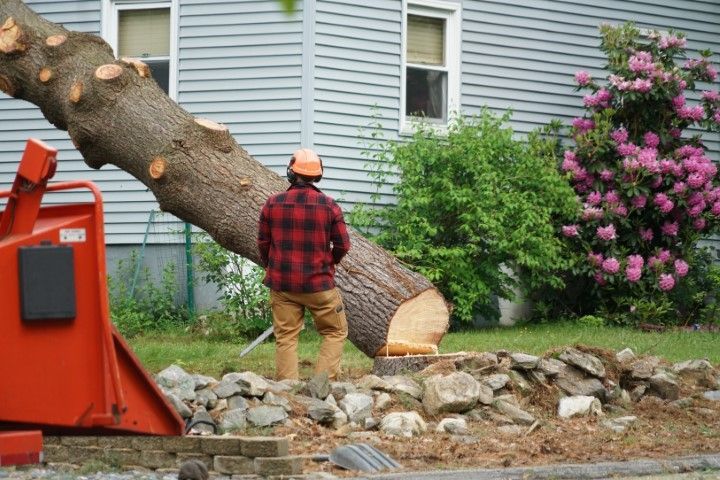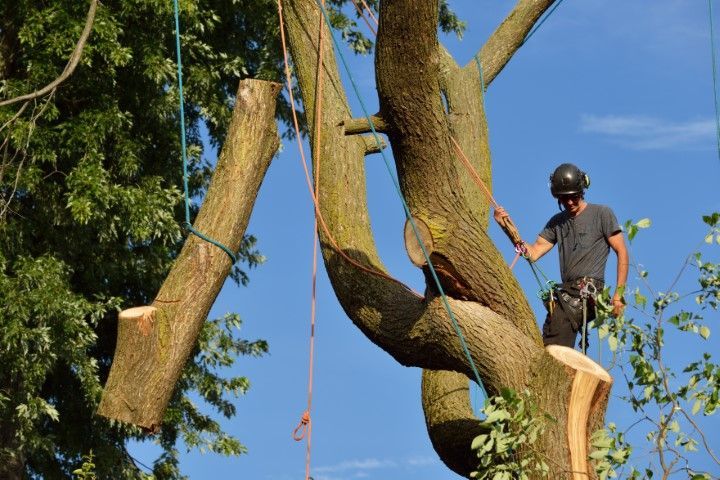Tree Removal in Waterloo IA

Tree removal is a significant task that requires careful planning and expertise. Whether a tree is diseased, damaged, or simply in the way of a construction project, having it removed safely is essential. Tree removal is often needed for various reasons, from safety concerns to improving property aesthetics. If you’re considering tree removal on your property, it’s important to understand the steps involved in the process to ensure it’s done efficiently and safely. The process of tree removal in Waterloo, IA, generally involves several key steps. Each stage is carefully planned to ensure the job is completed without harm to surrounding areas or people. Here’s what you can expect during the entire process:
Initial Consultation and Inspection
Before any work begins, a tree removal service will conduct an inspection of the tree. The technician will assess the tree’s condition, its size, and the surrounding environment. They will also evaluate any potential hazards, such as power lines or structures near the tree. This is a crucial step to determine the safest and most effective method for removal.
Obtaining Permits (if necessary)
In some cases, tree removal may require a permit, especially if the tree is located in a protected area or if it’s considered a significant tree. Local regulations may require property owners to get approval before removing certain types of trees. The tree removal service will help you understand the local laws and, if needed, assist in securing the proper permits.
Preparing the Area
Once everything is in place, the area around the tree will be prepared. This often involves clearing obstacles like furniture, garden plants, or debris. The crew will make sure there’s a clear path for the equipment to safely access the tree. In some cases, they may also set up protective barriers around nearby structures to prevent damage.
Removing the Tree
The actual removal process can vary depending on the size and location of the tree. Smaller trees may be felled using chainsaws, while larger trees may require a more strategic approach. This might include climbing the tree to remove sections bit by bit, or using a crane to carefully lower large sections to the ground. The team will work methodically to ensure that the tree is removed safely without causing damage to surrounding areas.
Disposing of the Tree
After the tree has been removed, the next step is to handle the disposal. In most cases, the tree will be cut into smaller pieces and hauled away. Some tree removal services offer additional services like stump grinding and wood chipping, which can help reduce the amount of debris left behind. If you’d like to keep the wood for firewood or other uses, you can often request this before the removal process begins.
Cleanup and Final Inspection
Once the tree has been completely removed, the area will be cleaned up. This includes removing branches, logs, and any other debris. A final inspection ensures that no damage was done to your property and that the area is left clean and tidy. If you requested stump grinding, this will also be taken care of at this time.
Tree removal is a complex and sometimes risky task that requires the right expertise. If you're looking for professional tree removal services in Waterloo, IA, don’t hesitate to contact us. Our team of experienced technicians is here to guide you through every step of the process, ensuring your property is well cared for and that the job is done safely. Reach out today to schedule your consultation and get your tree removal project underway.
When and Why You Should Consider Tree Removal
There are times when tree removal and stump grinding is necessary for safety, health, or other reasons. Understanding when and why you should consider removing a tree can help you make informed decisions about your landscape and property. Tree removal is a decision that should not be taken lightly. Here are some key situations when tree removal is necessary and why it might be the right choice:

Tree Health Issues
A tree that is diseased or severely damaged may no longer be able to thrive. If a tree has visible signs of illness, such as rotting wood, discolored leaves, or large cracks in its trunk, it could be weakening and posing a threat to nearby structures. Removing a sick or dying tree can prevent further damage to your property and reduce the risk of falling limbs.
Safety Concerns
A leaning tree or one with large, overhanging branches can become a safety hazard, especially during strong winds or storms. Trees that are too close to your home, power lines, or other important structures can cause damage if they fall. In such cases, removing the tree is a proactive step in avoiding potential harm or costly repairs.
Tree Overcrowding
In some situations, trees can become overcrowded, competing for sunlight, nutrients, and space. When this happens, some trees may not grow properly, leading to weaker structures that are more vulnerable to disease and damage. Removing one or more trees can help the others thrive and create a more balanced and healthy landscape.
Construction or Landscaping Projects
If you're planning a construction project, like building a deck, a home addition, or installing a pool, tree removal may be necessary to make room for the project. In addition, landscaping plans that include new garden beds, patios, or walkways may require removing trees to improve the overall design and functionality of the space.
Tree Root Damage
The roots of a tree can sometimes spread too far, causing damage to your driveway, foundation, or underground pipes. If the roots are causing issues with your property's infrastructure, it may be time to remove the tree to avoid costly repairs down the road.
If you're concerned about the health or safety of a tree on your property, don’t wait until it becomes a hazard. Contact us today for a professional tree inspection and safe removal. Our expert team will assess the situation and ensure that your property remains safe, beautiful, and free from unnecessary risks. Protect your home and family—take action before it’s too late.
The Risks of Ignoring Tree Removal on Your Property
When a tree becomes unhealthy, unstable, or dead, it can pose serious risks to your home, landscape, and even your safety. While the idea of tree removal may seem daunting or unnecessary, ignoring the potential dangers can lead to costly consequences. Below are the risks associated with delaying or neglecting tree trimming or removal on your property and why it's important to address the issue promptly.

Damage to Property
A weakened or diseased tree can be unpredictable. If a storm, strong winds, or even a light breeze strikes, branches or the entire tree can fall. This could cause significant damage to your roof, windows, cars, fences, or outdoor structures. The cost of repairing such damage often far exceeds the price of removing a problematic tree before disaster strikes.
Increased Risk of Injury
A tree in poor condition—whether it’s rotting at the base, leaning dangerously, or losing large branches—presents a serious safety hazard. A fallen branch or tree could injure family members, pets, or visitors to your home. Children, in particular, may not recognize the danger, which makes it even more important to address tree health early on.
Pest Infestation
Dead or dying trees are prime targets for pests like termites, ants, and beetles. These pests don’t just affect the tree; they can spread to other healthy trees and wooden structures around your home. Ignoring tree removal could lead to a full-blown infestation, making pest control more difficult and expensive in the long run.
Unstable Foundation for Future Growth
If you allow a decaying tree to remain, its roots may begin to invade your home’s foundation, sidewalks, and underground pipes. As roots grow, they can cause cracks in concrete, shifting in the foundation, and clogged or damaged plumbing. These issues may take years to manifest but can result in expensive repairs that could have been avoided by addressing the tree’s removal sooner.
Aesthetic Impact on Your Landscape
A dead or dying tree can ruin the aesthetic value of your property. Overgrown or unstable trees not only affect your landscape's beauty but can also lower your home’s curb appeal, reducing its value. For homeowners who plan to sell, tree removal can be an important part of making the property more attractive to potential buyers.
Legal and Insurance Issues
In some cases, if a tree falls and causes damage or injury, you may be held liable, especially if the tree was known to be hazardous but not removed. Additionally, if your tree interferes with a neighbor’s property or public spaces, it could lead to legal disputes. Property owners may face fines or penalties for failing to maintain their trees properly. Furthermore, some insurance policies may not cover damages caused by a neglected tree.
If you're considering tree removal for any of the reasons above, it’s essential to work with professionals who can safely and efficiently handle the job. We offer expert tree removal services to ensure the health and safety of your property. Our experienced team can assess the condition of your trees and provide the best solution for your needs. Contact us now to schedule a consultation and take the first step in maintaining the safety and beauty of your landscape.